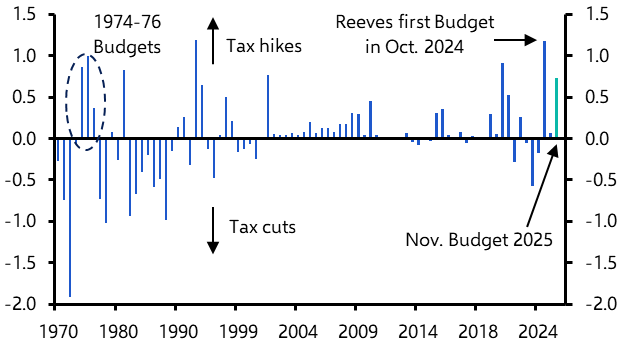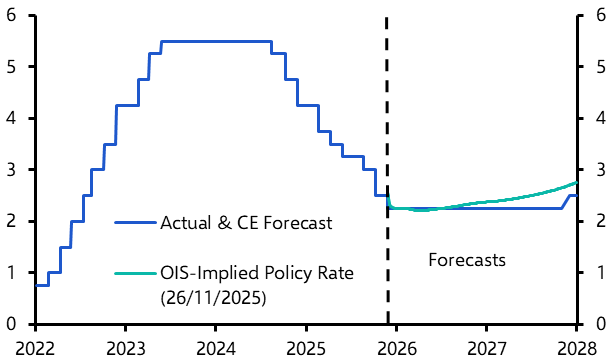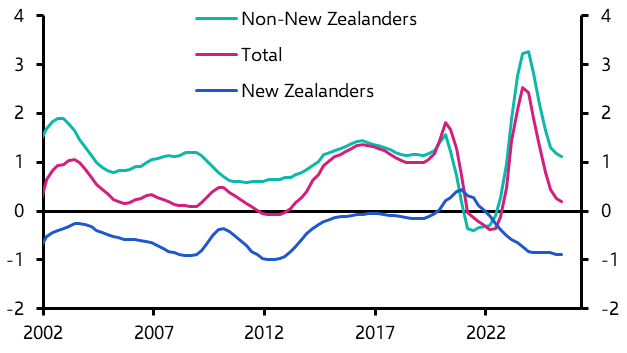One of the most interesting aspects of the economics of currency depreciation is how the narrative tends to develop in different ways in different countries. The trigger for the turbulence in global financial markets over the past couple of weeks was the US government’s decision to label China a “currency manipulator” – in effect, accusing it of gaining an unfair economic advantage by forcing the renminbi lower. Yet in the UK, the drop in the pound over the past month is viewed by many as an economic headwind.
Part of the reason for this difference in narratives lies in the fact that the economics of currency devaluation is complicated. A weaker exchange rate creates winners and losers. The overall effect on the macro economy depends on how these aggregate and can vary over time.
The main beneficiaries of a weaker currency are exporters and holders of foreign-currency denominated assets.
A drop in the exchange rate will raise the local currency value of exports, meaning the revenues of exporters increase. Some of this extra revenue may go to labour in the form of higher wages, but most will tend to flow to profits. This increase in profits should in turn encourage exporters to sell more overseas, meaning that over time output expands.
Similarly, holders of foreign currency-denominated assets see the local currency value of these assets – and the income that flows from them – increase. This in turn boosts their spending power.
Conversely, the main losers from a weaker exchange rate are importers and holders of foreign-currency liabilities. For importers, the local currency costs of foreign purchases increases. This tends to feed through to higher inflation, which in turn squeezes real income and thus spending.
Meanwhile, a weaker exchange rate will increase the local currency cost of servicing foreign currency-denominated debt. The resulting balance sheet problems have been at the heart of numerous EM debt crises over the years.
If all that’s not complicated enough, there are a series of second round effects that we also need to consider.
Domestic producers other than just exporters should benefit from the fact that a weaker currency pushes up the local currency price of imports. This diverts demand towards local production – raising output and employment.
On the other side of the ledger, in some circumstances a weaker currency may force the central bank to raise interest rates, either to choke off a subsequent rise in inflation or to limit destabilising outflows of capital. This would add to any headwinds facing the real economy.
The key point, then, is that devaluation creates winners and losers. The macroeconomic consequences of a weaker currency therefore depends on how these winners and losers aggregate, which in turn depends on characteristics of economy the in question.
Timeframes matter too. It is often the case that the costs of a weaker currency materialise more quickly than the benefits. This is particularly true in countries with large foreign currency-denominated liabilities, where the balance sheet strains caused by devaluation cause short-term pain, even if a weaker exchange rate is needed to a correct long-standing competitiveness problem. (This is at the root of the current challenges facing Argentina.)
So how do the different narratives playing out around China and the UK fit into this? Strange though it might sound, from the narrow perspective of the currency, there are similarities between the situations facing both countries. For a start, a weaker exchange rate does not pose serious balance sheet risks to either China or the UK – China is a large external creditor and the UK’s external liabilities are overwhelmingly denominated in sterling.
More fundamentally, in both cases, currencies are weakening in anticipation of future economic headwinds. In China, it’s the trade war with the US that’s souring the outlook, while in the UK it’s the growing risk of a “no deal” Brexit. In both cases a weaker exchange rate acts as a safety valve and should be viewed as a good thing.
Investors should therefore worry more about the underlying forces that are driving currency moves rather than the currency moves themselves. In the case of China, the key issue is whether last week’s decision by the Trump administration to delay additional tariffs on some Chinese goods marks a turning point in the trade war. We’re sceptical. In the case of the UK, the key issue is whether the tougher stance on Brexit adopted by the new Johnson government represents a negotiating tactic or a more genuine embrace of a “no deal” outcome. On that front, we’re increasingly worried.
In case you missed it:
(Requires Login)
- Our Senior China Economist, Julian Evans-Pritchard, assesses the economic and market implications of the Hong Kong protests and concludes a recession is on the way.
- Our Chief US Economist, Paul Ashworth, revisits the macroeconomic signals contained in the yield curve.
- Our Senior Europe Economist, David Oxley, argues that the Riksbank will have to take policy rates into negative territory.




